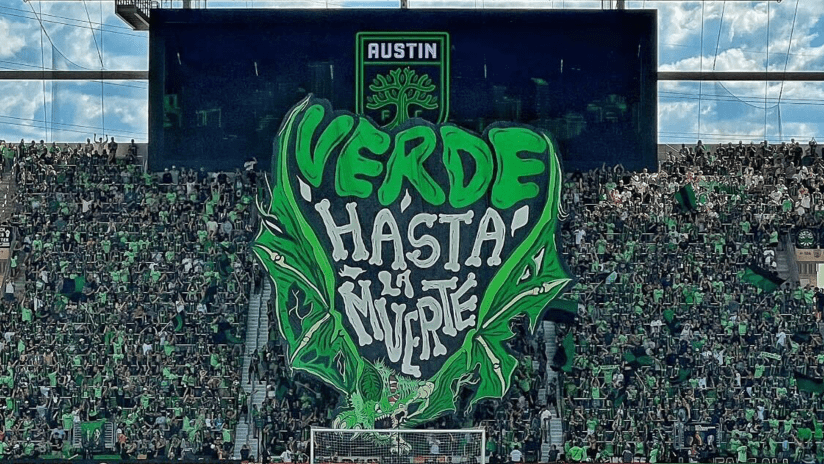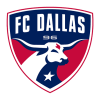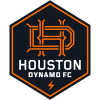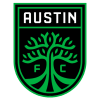The U.S. Census Bureau confirmed last month 40.2% of Texans – an estimated 12 million people – have roots in Latin America, making people of Latino or Hispanic origin the largest demographic group in the state. A large percentage of that new majority specifically identifies as Hispanic, with roots in primarily Spanish-speaking countries.
As those demographics continue to shift, Major League Soccer’s three Texas teams are presented with the increasingly critical task of connecting with and creating communal spaces for Hispanic soccer fans. There have already been some successes. There have already been plenty of failures. But each team recognizes the importance of Hispanic fans to their soccer ecosystem. And some fans have already fostered deep connections with their local club.
Connections lost
FC Dallas entered the league as Texas’ first MLS team. From 1996-2002 and 2004-05, the club – then known as the Dallas Burn – mostly played their home games in the Cotton Bowl, just a couple of miles from the heart of Dallas’ downtown. In August 2005, they took up residency at a stadium all to their own stadium in Frisco, 30 miles from downtown, and the demographics of the hyperlocal portion of their potential fanbase changed drastically. Per the U.S. Census Bureau, Dallas’ population is currently 42% Hispanic or Latino. Frisco’s is 12.7%.
“When we were down in downtown Dallas in the Cotton Bowl, we had a really good Hispanic base that was there because it was local,” longtime FC Dallas season ticket holder Ignacio Barbero said. “I understand the reason for [the change]: Beautiful stadium, fantastic facilities out there. World-class. But we lost a lot of Hispanic fans 20 years ago when that stadium was built.”
Barbero has been a season ticket holder since 1997. He places the flag of Argentina over the railing of the front row at every game he attends. During the days of that initial move to Frisco, there may not have been many in attendance who identified with his flag, or any flag from Latin America.
Outreach & service
That’s changed over time. Collaborative efforts between MLS and Liga MX, plus a growing list of outstanding homegrown players and Hispanic stars in Dallas and around the league, have all contributed to an increasingly diverse crowd. Even in just the last few months, Leagues Cup and Lionel Messi have drawn a surge of Hispanic fans to Frisco.
Attendance in general has steadily risen for FC Dallas games over the last few years. Last season, the team had its highest total attendance since 2014.
As a club, Dallas say they’re focused on local outreach such as the youth soccer clinics they host around the metroplex each year. There’s also been an increased focus on bilingual marketing that can provide entry-level introductions to Hispanic fans. Now, with those initiatives well underway, a new challenge arises for FC Dallas: convincing those newly-gained fans to come back.
“I think there's some ways to continue to grow it. I think they're doing a good job with what they've done so far,” Barbero said. “You have to keep it bilingual. You'd be surprised how many of the fans that come to see these games don't speak a whole lot of English. You need to have bilingual facilitators and people at the stadium that can help.
“But I think, overall, it's come a long way. There's a lot more color in the stadium up in Frisco than I ever expected, and it's a beautiful thing.”
Creating fandom pipelines
Juan Ortega became a Houston Dynamo FC season ticket holder in the club’s inaugural season thanks to two teams nowhere near Houston.
“We went to a couple of the games when we heard that Houston was getting a team. But it wasn't until the summer when our Mexican club, Club América, came,” Ortega said. “They were playing Barcelona here. When that was announced it was a big deal.
"The European teams weren't touring the states as much as they do now. They announced that you could get in on the presale if you were a season ticket holder. To get to the game, we bought season tickets for the Dynamo and went to that game with a different purpose in mind; I went to the rest of the season and that just hooked me.”
Ortega grew up watching Club América on Sunday afternoons. Now, he’s a member of a Dynamo supporters’ group, the Texian Army, working to create the kind of atmosphere that kept him coming back after América and Barcelona left the pitch.
“When you see little kids walking in with a Messi shirt or something, you know they brought them here. So our hope is we get them in, get them into the atmosphere, see what it's like and get them to come back with a Dynamo jersey,” Ortega said.
“Not a single person that we've brought out to the stadium, and to our Supporters’ Section with the Texian Army, and in the atmosphere that gets created – not a single person has a bad experience. They always want to come back. They always have a good time.”
Beyond Hispanic Heritage Month
Ortega and the club itself have similar aims to continue growing the fanbase. Hispanic fans are a critical aspect of that growth. Houston’s population is reported as 44.5% Hispanic or Latino. The club says nearly 60% of their fanbase identifies as Hispanic.
“We want to not just think about how we reach out to the community from the 15th of September to the 15th of October,” Houston’s Chief Marketing Officer, SJ Luedtke, said. “We certainly want to elevate that during this timeframe, but we’re really thinking about how we can have connection points throughout the year.”
In addition to partnering with local restaurants and artists, those connection points are often fostered by creating opportunities to play. There are 17 mini-pitches throughout Houston that provide year-round spaces to play, and the Dynamo (along with the NWSL’s Houston Dash) host 'Futbolito in the City' events through the summer and fall. The program offers free coaching to kids ages 6-14.
“For us, it's really about winning back the hearts and minds of our fans and obviously a big chunk of them are part of the Hispanic community. So for us, it’s about ‘bottom-up’ and being out and being present. Showing up in the right way. Being helpful. Finding ways to inspire, finding ways to serve and help the communities where they need it. I think that'll be an ongoing theme for us as a club in the near and foreseeable future,” Luedtke said.
According to Ortega, the club’s outreach efforts haven’t always been perfect. But they have certainly improved over time. As those efforts (and the team itself) continue to improve, good things will be on the way in Houston and around MLS.
“[The club] was marketed to soccer moms and had this very 'Go Team!' kind of spirit. And that's not what we know. That's not what we like. Now we’re seeing Spanish and now they're out there. They're building small pitches or small pickup soccer spots around town or the different areas of Houston,” Ortega said.
“In general, we're just super excited for the team now. Our love stems from our upbringing from our Hispanic roots. And that's what keeps us going. The love for the sport. And I think as it grows, I think this league is going to be huge.”
Building community
Bitia Buenrostro came to Austin via Matamoros, Mexico as an undergrad at the University of Texas. In Matamoros, soccer mattered. In Austin’s pre-MLS era, Buenrostro says fans of the sport were hard to find – at least until she and a friend from Mexico found a place to watch El Tri during the 2018 Men’s World Cup.
“Because of the circle I was in, it was just hard for me to connect with my community, and it was hard for a long time,” Buenrostro said. “Then we found a place where all the Mexico fans would watch the games, and we would be like ‘Where are all these people from? Why haven't we met them?’”
World Cups come and go pretty quickly, though. It took a moment for Buenrostro to find those people again. It took until Austin FC arrived in 2021.
During the team’s inaugural season, she became involved in Los Verdes, an Austin FC supporters’ group. Now she's a board member, surrounded by soccer community.
“It's changed my life. I know it sounds a little bit dramatic, but it really has. In Austin, it's a well-known fact that often, it can be very white. It is a progressive city. It has a lot of different things that are great for progressive issues, but the reality is for a long time, it's very white. I first came 20 years ago for my undergrad in 2003. It's still a very white world,” Buenrostro said.
“But then the team comes in. These last three years I’ve noticed a shift in our city, and it just makes me so happy and fills my little Mexican heart with joy because the team has really brought the Latino community together.”
It’s even brought those fans Buenrostro watched the World Cup with together. Now she can look back at pictures from those watch parties and pick out names and faces that she’s come to know through following Austin FC.
"It's therapy"
The club hasn’t always gotten everything right when it comes to connecting with Hispanic fans – “Listos! Verde!” didn’t make much grammatical sense as a call-and-response chant, it needed to be flipped – but it has certainly provided a place for the Hispanic community.
You can hear it in stories like Buenrostro’s, and you can hear it in the crowd on matchdays. Austin FC’s atmosphere is powered by La Murga, the brass and drum band nestled in the Supporters’ Section. The group is remarkably talented by “random collection of soccer fans” standards, and their sound is rooted in the style of street bands throughout Latin America.
Bombos, surdos, and repinique make up the rhythm section, the brass section plays the melodies of songs sung in both Spanish and English, and capos like Kirk Mangum conduct the band and the Austin crowd.
“Murga comes from the street bands in Argentina. So there's a heavy influence there. That rhythm and that vibe and that energy,” Mangum said. “We have lyrics in English and in Spanish. And, you know, it's interesting now talking about it, because initially, we're like, ‘Well, how are people going to catch on?’ Especially people that were not Spanish speakers. Honestly, it's been incredible. It's united everybody, not just Latinos.”
Mangum, a former D.C. United fan thanks to fellow Bolivian Marco Etcheverry, has found a new home with Austin FC and La Murga. Leading the band and crowd during games sometimes means missing out on key plays, but it’s worth it for the connections he’s made with people he says come from all walks of life and from countries throughout Latin America.
On a more personal level, it provides an escape.
“What La Murga has meant to me... it's been family, but being a capo has been a therapy. It's been a release for me. Everything we deal with on a daily basis with the stress of life. Different things and obstacles. We get to come together to have fun and to basically share an experience together in what I call our church,” Mangum said.
“I don't really watch the game. All the time. I'm watching the crowd. And people are like, ‘Man, it must really suck. It must be a lot of work.' Honestly though, it's therapy for me because I get to connect with everybody on a different level than I do. I take the role very seriously in terms of community and the role that we play in the supporter sessions.
“It's been a huge part of my life. It's been very important. I need it like I need air. It's not just about soccer anymore. Although my first love is football/soccer, it's grown into something that's bigger than I ever imagined.”
There’s still more to do. The Austin FC community can expand and provide places of belonging for more like Buenrostro and Mangum. It’s early days still, though, in the life of the club. And things seem to be heading in the right direction.
“It's all part of our culture, our DNA,” Mangum said. “So it's been really, really cool to see. I hope it continues. I think it can only grow from here, honestly.”













